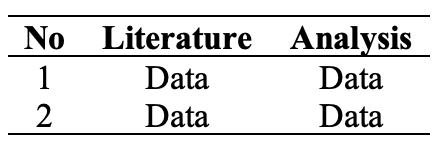> EDITORIAL TEAM
> AUTHOR GUIDELINE
> FOCUS AND SCOPE
> OPEN ACCESS POLICY
> PUBLICATION ETHICS
> PEER REVIEW PROCESS
> SECTION POLICIES
> PRIVACY STATEMENT
> COPYRIGHT AND LICENSE
> PLAGIARISM POLICY
> PUBLICATION FEE
> ARCHIVING POLICY
> COLLABORATION










